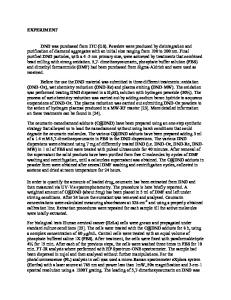Routes to Deagglomerated Nanopowder by Chemical Synthesis
- PDF / 1,218,940 Bytes
- 7 Pages / 414.72 x 648 pts Page_size
- 41 Downloads / 287 Views
systems tend to minimize their surface free energy either by growing to larger particles or agglomeration. In order to utilize chemical processes for the synthesis of nanosized powders, these reactions have to be avoided by controlling the thermodynamics of the interfaces within the reacting system. One approach is the w/o microemulsion techniques limiting the reaction volume to a nanometer scale and to use these so-called nano-scaled reactors as vehicles for particle synthesis [8-11]. An alternative is to modify the surface of growing particles during the precipitation process in a way that growth reaction can take place but a "growing together" (agglomeration) is prevented. The use of surface active compounds seems to be suitable for this purpose. In this case, the surface free energy is reduced to an appropriate level by the interaction of the surface modifier with the generated particle surface. Thus the enthalpy of the system is influenced by the coupling reaction of the modifier with the surface functional groups. This type of surface modification can provide steric repulsive forces between particles preventing agglomeration by van der Waals forces. As a model for the investigation, yttriastabilized zirconia (Y 20 3 /ZrO2) has been selected to prove the feasibility of the above described hypothesis. Since the redispersibility of nano-scaled powders is one of the main objectives the results of microemulsion and controlled growth preparation techniques have to be compared with respect to this. State of the art concerning microemulsion techniques already shows, that nano-scaled powders can be prepared, whereas controlled growth techniques are at their infancy. Therefore, the microemulsion techniques has been optimized with respect to reduce the emulsifier concentration and to end up with more simple systems compared to the multicomponent systems [10, 11]. The question arises whether it is possible to use the HLB-theory with only one type of molecule. 101 Mat. Res. Soc. Symp. Proc. Vol. 346. 01994 Materials Research Society
EXPERIMENTAL Microemulsions were prepared by mixing cyclohexane, tetraethylenglycoldodecylether (Brij 30®, ICI, HLB = 9.7) and an aqueous solution of 4,4 wt. % ZrO(NO3)2 and 1 wt.-% Y(N0 3 ) 3 (9 mole-% Y 20 3 with respect fo ZrO 2). For the preparation of the particles a cyclohexane/Brij 30 volume ratio of 7.8 was used. Particles were precipitated inside the aqueous droplets by bubbling ammonia through the emulsion. For isolation of the powder, water and cyclohexane were removed by destillation and the residual was washed with CHC13 and dried at 60 'C. For the growth reactions, a solution of zircon-n-propoxide in ethanol containing 5 mole % of Y(N0 3 ) 3 with respect to Zr was added dropwise to an aqueous emulsion of surface modifying agents (about 2-6 wt.%) and ammonia. For all experiments, the mass ratio of the precursor solution to the aqueous solution was 1. As emulsifier system a mixture of Emulsogen OG8 (Hoechst), Tween 80® (ICI) and octanol was used. The precipitates were isolated by
Data Loading...











